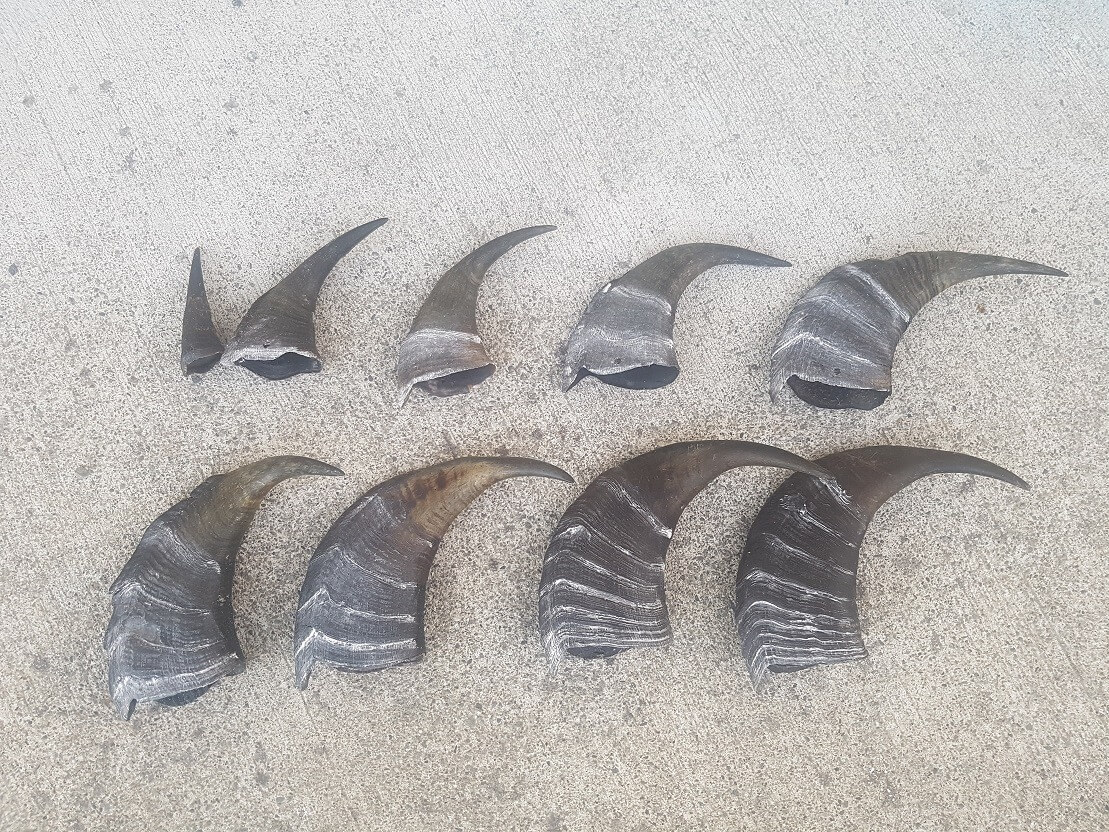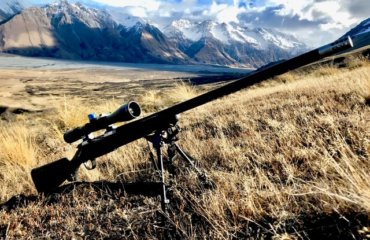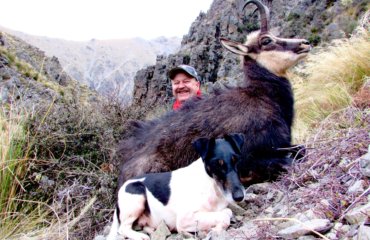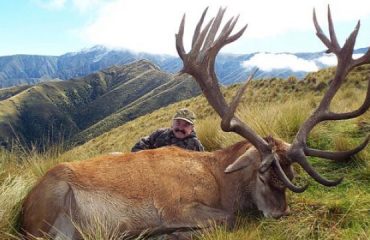How to Age a Tahr
One of the most common confusions we see is with people not knowing how to age Tahr properly. The easiest and most accurate way is to use horn ‘annuli’.
Annuli in this sense is referring to a ‘ring’ formed on the horns of animals as their horn growth slows/stops. With Tahr this happens during the winter and every winter a new ‘ring’ will appear. As the spring growth comes through the horn will grow away again.
The spaces between each ‘ring’ will progressively get smaller each year until the animal reaches a point where they grow very little. Annuli form on most horned animals, both male and females, and have been used for a long time as an accurate age measure. False ‘rings’ can and do occur, these are where the animal has a short period of slowed/changed growth (such as an injury), these rings are not as well defined as ‘true annuli’. Tahr horns are generally pretty straight forward to age, and have few false rings or wrinkles.
The best view to see annuli is often from the ‘inside’ (back side) of the horn, as the outer surface can be broomed/damaged and harder to read. True annuli will be a defined line that goes all of the way around the horn, and you will be able to get your fingernail/knife edge into the ‘ring’.
One thing to remember is annuli/ ‘rings’ refer to winters, not years. They don’t magically form on the animal’s birth day. So, animals are generally called full or half years depending on the time of year they are shot. Animals shot in the spring/summer will be ‘full years’, eg 9 or 10 and so on. Shot during the rut/winter they will be closer to ‘half years’, eg 9.5 or 10.5 etc.
As we know most Tahr are born at the end of November, from then they have about 6 months of growing before their first winter and during this winter the horn growth is slowed. The horns then start growing again in the spring. This first growth is refereed to as a ‘lamp tip’, and this first growth is arguably the most important in determining the overall size of the horn.
The first real ‘ring’ is formed the next winter at around 1.5 years (18months) old. From then on, we see the same pattern with around 6-8 months growth and a ‘ring’ formed each winter. Like all horned animals the first couple of years really determine how big the horns will grow.
A bull can grow anything from 4”-8” over the first 1.5 years and a bull can never ‘catch up’. (they cannot grow more in their 3rd year than they did in their 2nd year). This is important to remember when looking at ‘false rings’.
Determining the first ‘ring’ at 1.5 years is the most important and can often be hard to see. A good indicator is the change in horn type, the lamb tip is smooth and with out a ‘keel’ or ‘ridge’.
We are seeing some true monster Tahr being shot, some pushing 14+” at only 5-7 years, what these bulls would grow into if left to old age is hard to imagine. Passing these bulls up is a very hard decision, especially on public land. But I think it is only a matter of time before we a see a few of these bulls that have escaped hunters and lived to old age and some of them will be pushing well into the 16-17″ class if given the chance. Of note is the current World Record bull(Free range), only 7 years old and is over 15″ long with 10 1/4″ bases(SCI 50 7/8ths).
A bull Tahr seems to live for a maximum of around 15-17 years, after the 8-9 year bracket the horn growth slows dramatically and is only around 1/8 or 2/8ths of an inch per year.
This rut we are likely to see a perceived ‘increase’ in bull Tahr numbers, this will be because of the reduced numbers of Nannys.
In some ways this will be good, as there will be alot of bulls to look over, but its important to remember the longer term impacts of the animals we shoot and we need to work toward a stable and healthy herd as a hunting resource.
A bull Tahr is mature around 6-7 years, and we need to ensure we are targeting bulls older than this to make sure the herd retains a natural balance.
If anyone has some good photos of old bulls feel free to send them into us, or post them below, and remember to share this around leading up the main hunting season.




